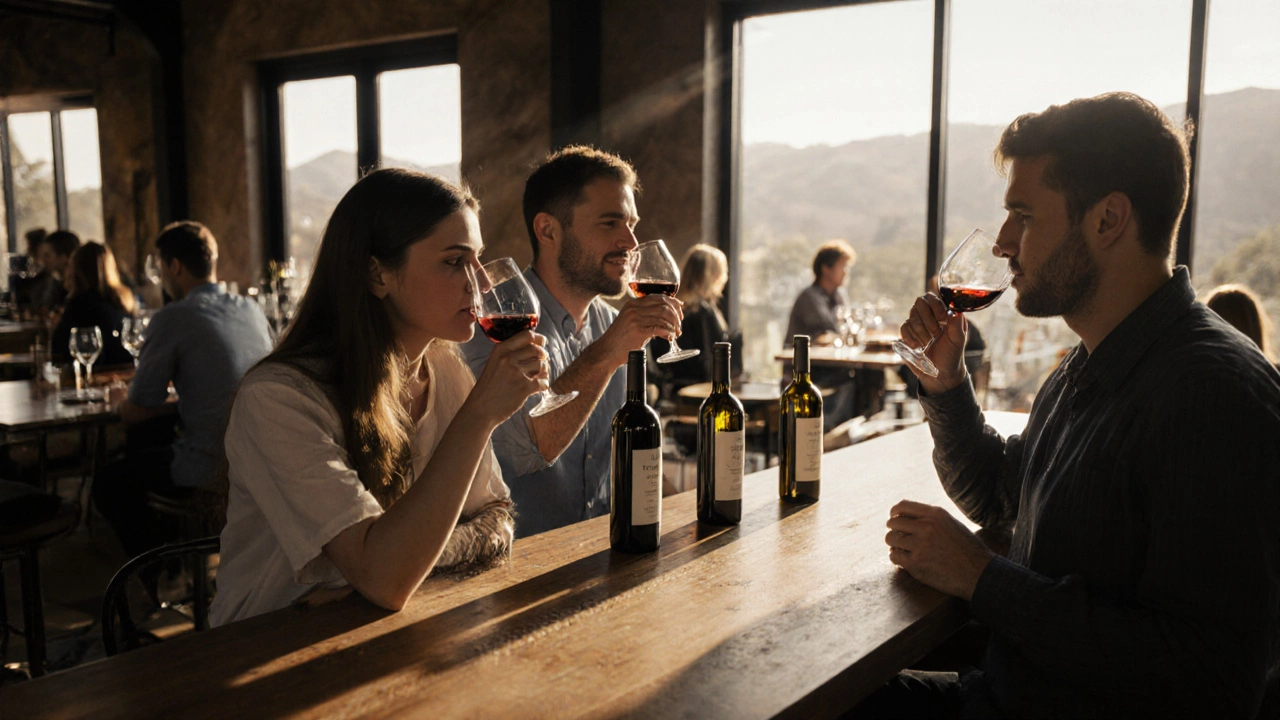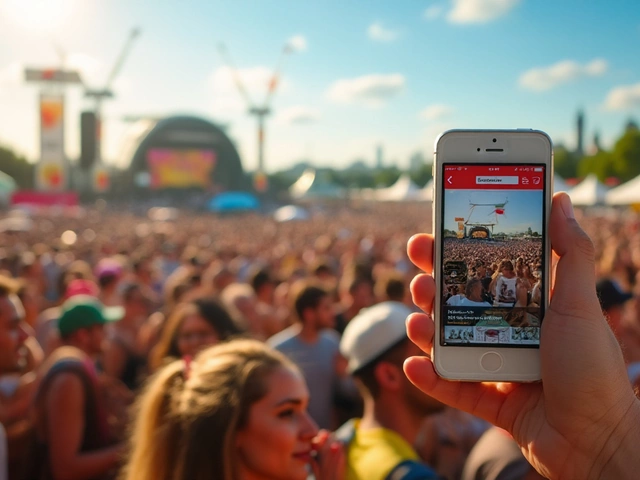Wine Tasting Duration Calculator
How Long Should Your Wine Tasting Take?
Calculate your ideal tasting duration based on the experience type and your preferences.
Your Estimated Time
Why this timing?
Ever shown up to a vineyard ready to spend an afternoon, only to realize you’re stuck in a 20-minute tasting and wondering where the rest of your day went? Or maybe you’ve been told you need three hours for a proper tasting-and now you’re scrambling to rearrange your whole schedule. The truth is, there’s no single answer to how long a wine tasting takes. It depends on where you are, what kind of experience you’re after, and whether you’re just sipping or really learning.
Quick Tastings: 15 to 30 Minutes
Most casual tasting rooms-especially in busy wine regions like Napa, Marlborough, or Bordeaux-offer quick sessions that last 15 to 30 minutes. These are designed for tourists on tight schedules, people popping in between lunch and a hike, or those who just want to try a few bottles without committing to a full experience.
You’ll typically get 3 to 5 wines, served in small pours. The staff will give you a quick rundown: grape variety, region, flavor notes. They might mention if it’s aged in oak or fermented in stainless steel. That’s it. No vineyard tour. No food pairings. No sitting down with a winemaker. Just pour, sip, spit (if you’re being smart), and move on.
These are common at large commercial wineries, airport shops, or downtown tasting rooms in cities. If you’re short on time or just testing the waters, this is your go-to. But don’t expect to walk away with deep knowledge-or even a clear memory of what you tasted.
Standard Tastings: 45 to 75 Minutes
This is the sweet spot for most people. A 45- to 75-minute tasting gives you breathing room. You’ll usually taste 5 to 8 wines, including a reserve or limited release. The host will explain the winemaking process, the vineyard’s philosophy, and how weather or soil affects each bottle.
You might sit at a table instead of a counter. There’s time to ask questions. Maybe you’ll get a small cheese or cracker to go with one of the wines. Some places include a brief walk through the barrel room or a peek at the bottling line. You’re not just drinking-you’re learning.
In places like New Zealand’s Marlborough region, where Sauvignon Blanc dominates, this is the standard. You’ll taste the crisp citrus notes of a young vintage next to a more complex, barrel-aged version. You’ll understand why one costs twice as much. You’ll leave with a better idea of what you like.
Extended Experiences: 2 to 4 Hours
If you’re serious about wine-or just want to make a day of it-go for the extended tasting. These are often called “premium experiences,” “vineyard tours,” or “behind-the-scenes tastings.” They include everything from a guided walk through the vines to a sit-down lunch paired with multiple wines.
At a place like Te Mata Estate in Hawke’s Bay or Cloudy Bay in Marlborough, you might start with a tour of the estate, then move to the cellar to taste wines straight from the barrel. You’ll get to taste the same wine at different stages of aging. You’ll meet the winemaker. You’ll learn about soil types, trellising methods, and how frost impacts harvest.
These experiences often include food: artisanal cheeses, charcuterie, or even a full multi-course meal. Some even offer blending sessions, where you mix your own wine from different lots and take it home in a bottle labeled with your name.
These aren’t cheap. Expect to pay $80 to $200 per person. But if you’re planning a special occasion, a birthday, or a romantic getaway, this is where wine tasting turns into a memory.

Group vs. Private Tastings
Group tastings usually run on a tight schedule. If you’re part of a tour bus group of 15 people, you’ll likely get 30 minutes max. The staff has to move you through quickly. Private tastings, on the other hand, can stretch out. You control the pace. You can linger over one wine. You can ask why the 2021 vintage was so different from 2022. You can even request a tasting of older bottles they keep in reserve.
Private tastings are perfect if you’re a curious beginner or a wine nerd who wants to dive deep. They’re also great if you’re traveling with someone who has very different tastes-you can skip wines you don’t like and focus on what excites you.
What’s Not Included in Most Tastings
Many people assume wine tastings include food, tours, or transportation. They don’t. Unless it’s clearly stated, you’re getting wine and a short explanation. No bread. No olives. No parking. No shuttle.
Some places offer complimentary water and crackers to cleanse your palate. Others charge extra for snacks. Always check the booking page or call ahead. If you’re planning to taste six wines, you’ll want something to eat afterward-wine on an empty stomach hits harder than you expect.

How to Plan Your Time
If you’re visiting a wine region, don’t try to do more than two tastings a day. Even if each one is only an hour, you need time to travel, digest, and reset your palate. Three tastings in one day will leave you numb, confused, and possibly hungover.
Here’s a simple rule: spend at least 90 minutes between tastings. That gives you time to eat, walk around, and let your taste buds recover. Drink water. Eat something salty. Don’t just hop from one cellar to the next.
Also, book ahead. Many wineries don’t take walk-ins for anything longer than a basic tasting. Even the quick ones often require reservations on weekends. Don’t show up hoping to squeeze in-you’ll be turned away.
What to Do If You Don’t Like Wine
Not everyone loves wine. That’s okay. Many wineries now offer non-alcoholic options: sparkling grape juice, herbal infusions, or even local kombucha. Some even have tasting flights of cider or craft beer alongside their wines.
Ask if they have alternative pairings. You might be surprised how much you enjoy the experience-even without alcohol. The scenery, the stories, the food-they’re still there.
Final Tip: Spit or Swallow?
Professional tasters spit. They don’t swallow. It’s not weird-it’s smart. If you’re tasting six or eight wines, swallowing means you’ll be drunk by the third. Spitting lets you taste more, remember more, and drive home safely.
Most tasting rooms provide spittoons. If you’re unsure how to use one, just ask. The staff won’t judge. They’ve seen it all. And if you’re not comfortable spitting, that’s fine too. Just go slow. Pace yourself. Drink water between glasses.
Wine tasting isn’t about how many sips you take. It’s about how much you notice. A 20-minute tasting can teach you more than a three-hour one if you’re paying attention. Slow down. Smell the wine. Notice the texture. Ask why it tastes the way it does. That’s what lasts.
How long does a typical wine tasting last?
Most wine tastings last between 30 and 75 minutes. Quick tastings are 15 to 30 minutes and include 3 to 5 wines. Standard tastings last about an hour and include 5 to 8 wines with some background on the winemaking process. Extended experiences can last 2 to 4 hours and often include food, vineyard tours, and meetings with the winemaker.
Can you do multiple wine tastings in one day?
Yes, but it’s best to limit yourself to two per day. Tasting too many wines in a short time dulls your palate and makes it hard to appreciate differences. Allow at least 90 minutes between tastings to eat, walk, and reset your senses. Drink water and avoid heavy meals right before each tasting.
Do you need to book a wine tasting in advance?
Yes, especially on weekends or during peak season. Most wineries require reservations for anything beyond a basic tasting. Even quick tastings are often fully booked. Calling ahead or booking online ensures you won’t be turned away. Some places offer last-minute walk-in slots, but don’t count on them.
Is wine tasting only for experts?
No. Wine tasting is for anyone curious about flavor. Staff at most wineries are trained to explain things simply, whether you’ve never had wine before or you’ve collected bottles for years. Don’t feel pressured to use fancy terms. Just say what you taste-fruity, earthy, bitter, smooth-and they’ll help you understand why.
Should you spit or swallow during a wine tasting?
Spitting is the professional standard, especially when tasting multiple wines. It keeps your palate sharp and avoids intoxication. Most tasting rooms provide spittoons. If you’re uncomfortable, you can swallow-but go slowly and drink water between glasses. It’s not rude to spit. In fact, it’s the smartest way to enjoy a tasting without losing control.
Are food pairings included in wine tastings?
Sometimes. Basic tastings usually include a cracker or bread to cleanse the palate. Food pairings like cheese, charcuterie, or chocolate are often part of premium or extended experiences. Always check the tasting description before booking. If food matters to you, choose a package that includes it.
What if I don’t like wine? Is there still value in a tasting?
Absolutely. Many wineries now offer non-alcoholic options like sparkling grape juice, herbal infusions, or craft cider. Even if you don’t drink alcohol, you can still enjoy the scenery, the stories behind the wine, and the food pairings. The experience is about discovery, not consumption.
Wine tasting isn’t a race. It’s a conversation between the land, the grape, and the person holding the glass. Whether you spend 20 minutes or 3 hours, what matters is that you’re present. Take your time. Taste slowly. Ask questions. And if you leave with just one new thing you noticed-maybe that a Sauvignon Blanc can smell like wet stones, not just lime-that’s enough.





